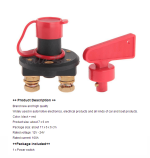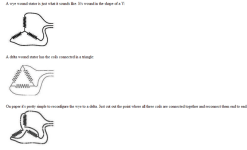Lebowski
10 MW
huh ?kejanostra said:I searched in my box of brothel,
huh ?kejanostra said:I searched in my box of brothel,
Lebowski said:huh ?kejanostra said:I searched in my box of brothel,
Harold in CR said:I bought a 45A alternator, ($25.00 US)an 80A Mystery ESC ($16.00) and 2 Servo testers, ($8.00) all the electronics same as yours. :lol: When they are delivered to me, I will see if I can duplicate your results. 8)
Thanks for putting so much effort into this project and sharing here.
Harold in CR
Real life things got in my way for few days, but Im back again.kejanostra said:I crossed a few hours to make this plan, then he is correct?
Thank you. :wink:
Hello! I hope nothing nasty for you?parabellum said:Real life things got in my way for few days, but Im back again.
I asked myself the question on this button,parabellum said:1)This A switch(looks like you want to use it over your throttle) will not work for ESC, it must be some 80A capable switch, relay or manual connectors (for ESC you have).
I not knowledge of this component "CA3", he must be connected where, and where to buy?parabellum said:2)Your ESC has no current limiting and conductor on the "motor" is way to tough for it( I believe), you probably will burn the ESC in low speed high current event, CA3 is not cheap but will limit battery current and as consequence phase current, keeping the system alive for long time (Limiting current on some 80/3 A). Other solution is to by some >200A esc, but still not fool proof.
I was going to make good heat dissipateur on ESC.parabellum said:3)You need cooling on the ESC, or temp sensor for temperature monitoring, better both.
I do not know what this switch does, there is no description, but it definitively does not cut Bat+ to ESC+. Use 12V car relay trigered by your little switch over throttle or just use 60 or 100A circuit breaker, like following or what ever you get where you live.kejanostra said:As this one, he is good?
http://cgi.ebay.fr/ws/eBayISAPI.dll?ViewItem&item=201110476153&ssPageName=STRK:MEWAX:IT&_trksid=p3984.m1438.l2649
parabellum said:I do not know what this switch does, there is no description, but it definitively does not cut Bat+ to ESC+.
parabellum said:CA3 is:http://www.ebikes.ca/product-info/grin-products/cycle-analyst.html
There are piles of treads about on ES. V3 has ESC PWM output, you do not need servo tester anymore, just throttle-CA3-ESC. You will need Stand Alone version with shunt and sped sensor, then you are set and secure.
kejanostra said:parabellum said:I do not know what this switch does, there is no description, but it definitively does not cut Bat+ to ESC+.
Nevertheless, he(it) is planned to light / put out for ESC until 150A.
parabellum said:CA3 is:http://www.ebikes.ca/product-info/grin-products/cycle-analyst.html
There are piles of treads about on ES. V3 has ESC PWM output, you do not need servo tester anymore, just throttle-CA3-ESC. You will need Stand Alone version with shunt and sped sensor, then you are set and secure.
I saw a guy on another forum, which uses a tester of servo with LCD screen which gives the information watt, ampere, etc., and he connected the wires handle throttle inside, then he works very good and simillaire to CA3, but 3X cheaper than this CA3.
But I, I veus not launched so much money in this small project, because my purpose, and to make exactly one undid project for cheap, you understand?
Because ensute, people who have not enormous money can make also.
PS:
The ESC 80A, delivers only at its exit 80A, to the engine (Alternator or Brushless rc),
but, it does not need of 80A, on red and black at its entry?!
Then I includes not why, my on/off switch, not not allowed to pass the current 12V, to entry (+ and-) ESC.
parabellum said:Gentleman's, do not expect much of this generators, they may be good solution to generate some charge for your battery, but very poor and inefficient motors.
Harold, I do not want to disappoint you, but this whole generator is more a heater at higher ERPM, due to Eddy Currents generated on those thick lam stacks.
No, my friend, it annoys me to realize your disappointment at end of the hard work you are putting in, being my fault overlooking some failing aspect of your design, after taking this responsibility.kejanostra said:Parabellum, if it annoys you to participate on this thing, useless to tire you to answer, I would understand.
And they grew again since? :lol:parabellum said:I would rip all hairs out of my ass to make....
Yes, it's true, the prices concerning Lithium batteries and charger are very high. (According to the Voltage wish).parabellum said:P.S. 30% of Li battery cost in my moped is actually much higher then 100% of the motor cost.
This one looks good. You only need the relay to disconnect battery from ESC, so there is no parasitic drain while you do not use your system, rest of your low current electronics can be interrupted by switch (on relay coil input) or by relay itself (on ESC input). Just try not to go over half of the switch rating, they usually do not live long on max current.kejanostra said:Then otherwise, I hesitate between circuit breaker 100A and that:
http://www.aliexpress.com/item/Rela...lay-100A-Relay-12V-Relay-5PINS/874101590.html
This relay seems the shit to be connected with 5 brooches! But he is 12V 100A, that to make?
Would I do can connected my switch on/off ( A ), before this relay, then relay towards all the rest?
OK, but I would be obliged to disconnect with the hand, it is boring, because I wanted a button to put in-out (switch on-off) supply battery towards ESC.parabellum said:You only need the relay to disconnect battery from ESC
OK, It is thus necessary to redo all my plan, because nothing more goes now.parabellum said:rest of your low current electronics can be interrupted by switch (on relay coil input) or by relay itself (on ESC input).
I could not overtaken half of the current for switch (6A 250V - 10A 125V), that's it about which vouv want spoken?.parabellum said:Just try not to go over half of the switch rating
If switch is 6A rated, try to have 3A or less going trough. Remember DC current is hard to interrupt.kejanostra said:parabellum wrote:
Just try not to go over half of the switch rating
That is? Not good understood.
I do not know what you mean here. You can have just a connector you can unplug manually, it is very uncool to do in front of people, but it works fine. If you switch rest of the electronic (mostly rotor exciting) off by the switch, you can let it plugged in (I do not think brain and caps drain that much), until you are home.kejanostra said:parabellum wrote:
You only need the relay to disconnect battery from ESC
OK, but I would be obliged to disconnect in the hand, it is boring, because I wanted a button to put out (switch off) supply battery towards ESC.
parabellum said:I do not know what you mean here. You can have just a connector you can unplug manually, it is very uncool to do in front of people, but it works fine.
Yeah, that switch is cool, it is actually a key lock, take key with you and nobody can mess with your...? What are you doing? Is it a bike? . Do not forget to keep your power wiring as short as possible.kejanostra said:parabellum said:I do not know what you mean here. You can have just a connector you can unplug manually, it is very uncool to do in front of people, but it works fine.
In my precedent message, I badly expressed myself, I wanted to say:
I veus to put out(switch off) with a button, and I wish not disconnected manually a wire to put out (switch off).
If that there could be OK for battery and ESC, it would be better towards the handlebars.
http://www.aliexpress.com/item/For-...-Off-Isolator-Ignition-TT2951/1621683840.html
:wink:
parabellum said:Yeah, that switch is cool, it is actually a key lock, take key with you and nobody can mess with your...? What are you doing? Is it a bike? . Do not forget to keep your power wiring as short as possible.

You have actually Low V and high Current setup. Cables participating in power transmission should be accordingly gauged, it means + and - from battery to ESC (you may know but on your picture -(negative) should go directly to ESC, not crossing thin step down converter traces).kejanostra said:Thus, how you say Parabellum, I have to put the wires closer possible of the battery?That's boring, Because I wanted to put everything switch etc., on handlebars to be comfortable.
What kind of wires do you do recommend me Parabellum? Because I thought of the wires is domestic (copper and stiff), or, son as classic electric extension lead (braid copper and souple - 2,5mm-3mm).
Yes, it's true, I had thought in more! Look now at the plan, I modified on him. :wink:parabellum said:but on your picture -(negative) should go directly to ESC, not crossing thin step down converter traces).
OK, thank you for the picture and the informations.parabellum said:You can also source good thick wire at Car Sound Audio stores, following above rules.
You can install power switch on the handles, but every additional cm of wire is additional heating and efficiency loss.
Next is nice picture of conductor equivalents.
Your new plan looks good.kejanostra said:New Plan:

parabellum said:I do not know what you want to say with your previous post.
